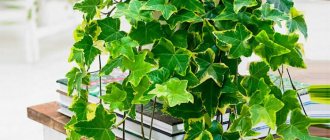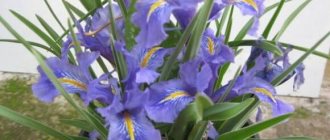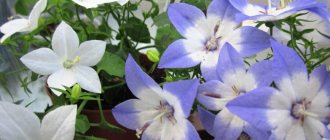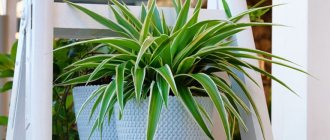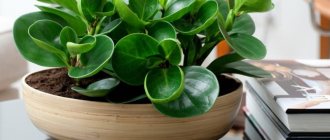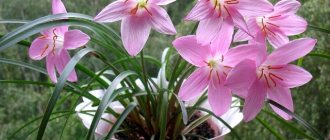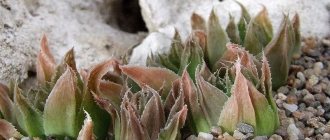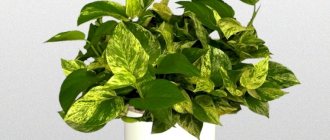Scindapsus is a liana that was domesticated by the peoples of Asia several centuries ago. In Eastern culture, this plant occupies a special place, since legends and beliefs say that homemade scindapsus attracts positive energies into the house, helps get rid of internal anger, promotes the release of creative potential and making rational decisions.
However, among gardeners and lovers of indoor plants, scindapsus is valued for its ease of care and beneficial qualities. Liana belongs to the phytoncides, which means it contains and actively produces substances that prevent the appearance of protozoa, bacteria and fungi. Therefore, it is useful to keep such a plant in a house where there are children and people suffering from allergies.
Description of the plant
Scindapsus is a species of vine from the Araceae family. Literally translated from Latin, "Scindapsus" means "devil's ivy" or "devil's ivy."
The plant grows in southern Asia and has 25 species, of which only three are cultivated. This is an evergreen, perennial vine, which in nature reaches impressive sizes and can fill a large space. Therefore, in Asian countries, wild scindapsus is considered a parasitic plant.
The leaves of the vine, depending on the species, are oval or heart-shaped. The color can be a solid dark green or with mottled patterns in lighter shades.
Scindapsus is related to Monstera. These tropical vines have a similar root system: adventitious roots without a main stem (fibrous) + aerial roots, so that the plant can crawl to any height.
Under natural conditions, scindapsus blooms by throwing out an ear with inconspicuous flowers of two sexes. House plants do not bloom. Domesticated scindapsus is a dwarf, decorative and very low-maintenance vine. It is grown as a hanging plant for decorating window sills, balconies and other vertical gardening objects.
Scindapsus treubii
Scindapus Troiba, which is naturally distributed in Java, Borneo and Malaysia, is also a collectible rarity. A characteristic feature of the species is rather narrow pointed leaves with a dense leaf plate and unhurried growth, compared to other varieties.
Today, flower growers have at their disposal an original variety with greenish-gray waxy leaves edged with a green stripe and the same central veins. Thanks to its unpretentious disposition and slow growth, this type of scindapsus is perfect for setting up a vivarium.
Types, varieties with photos
Golden scindapsus / Scindapsus aureus
This is the most common cultivated species. However, there is constant debate in the scientific community regarding the classification of this type of vine as a genus. Some botanical dictionaries list the liana in the genus Scindapsus, while others in the genus Epipremnum.
Therefore, the same plant in flower catalogs can be designated under different names - Scindapsus aureus and Epipremnum aureus.
More outdated dictionaries call the vine “ raphidophora ”, as well as “ pothos ”.
Despite such a variety of botanical names, underneath all this confusion lies a plant that is a vine capable of climbing up supports or hanging spectacularly from flowerpots. The maximum length of shoots is two meters. The oval leaves have a bright green color, against which yellow-golden spots are randomly scattered.
Varieties:
- Marble Queen / Marble Queen;
- Tricolor / Scindapsus Tricolor;
- Golden Queen / Golden Queen.
Scindapsus pictus
Characterized by medium-sized foliage (up to 15 cm in length) in the shape of a distorted heart. The color of the leaf blade is dark green. The outer part of the leaves has a silver arched pattern.
The developed variety is Scindapsus pictus Argyraeus.
Scindapsus siamese (Thai)/ Scindapsus siamensis
This home vine is distinguished by large leaf plates in the shape of an elongated heart. White spots are scattered on the green background of foliage.
Scindapsus pictus
Scindapsus painted or spotted is a native of distant Malaysia. In humid forests, vines covered with variegated asymmetrical leaves climb trees, using aerial roots to cling to the trunks and receive additional moisture from the air.
A characteristic feature of this species is the unusual shape of pointed, heart-shaped leaf plates, one side of which is smaller than the other. There is a bright white border along the edge of the leaf, and silver-white spots are scattered throughout the area.
Among the popular varieties for growing at home is Argyraeus scindapsus, in addition to which flower growers love and appreciate the silvery variety of the plant.
Home care
Lighting
Scindapsus grows in artificial and natural light. The only condition is that the light must be diffused. Changes in the length of daylight hours may temporarily deprive the leaves of the vine of its spotted color, but the pattern may soon appear again.
Temperature
Comfortable temperatures for scindapsus are in the range from 16 to 22 degrees.
Watering and humidity
Watering should be rare but plentiful. When temperatures drop, the amount of watering should be reduced to a minimum. It is best to add water when the top layer of soil is completely dry.
Scindapsus loves moist air very much and will delight with bright and lush foliage if it is often sprayed and the leaves are wiped with a damp sponge.
But dry air can lead to wilting of the vine, so the pot of scindapsus should be kept away from radiators and other heating devices.
Priming
The soil should be slightly acidic or neutral acidity. From ready-made mixtures, soil for Monstera is suitable.
You can mix the substrate yourself from turf, leaf soil and peat (1:2:2). You should also add river sand, crushed pine bark and sphagnum moss to this mixture. This mixture should be one proportion of the total portion of the main substrate.
Fertilizers
From early spring to late autumn, the liana is in a state of intensive growth, so it needs minerals. During this period, the plant needs to be fed once every two weeks. Mixtures for vines and Monstera are used as fertilizer in the dose specified by the manufacturer.
In winter, you can fertilize the soil once a month or eliminate fertilizing completely.
Transfer
You should only disturb scindapsus with transplants if the root system has grown too large and there is not enough space for it in the pot. The long shoots of the vine are very fragile, as are the branched roots. Therefore, transplantation is carried out before the start of the growing season by transshipment.
Conditions of detention
In nature, the culture grows in tropical rainforests, multiplies quickly and takes over the surrounding areas. Thanks to its ability to lean on support, it does not experience a lack of light and can grow in shade or partial shade. At home, growth is controlled by pruning.
Lighting
The plant is shade-tolerant, but if you place the pot far from the window, where there is little light, this will affect the size and color of the leaves - they will be smaller and less saturated in color. Lack of light can cause leaves to drop, so in a room where the sun is not sunny all day, it is better to place the pot near a window. Variegated varieties require more light, otherwise the leaves will lose their color saturation. The best place is where there is bright but diffused light.
Temperature, humidity
Scindapsus is a native of the tropics, so it grows best at temperatures between 20 and 25 °C. It will tolerate higher temperatures without problems if you water it in a timely manner, humidify the air, and spray it. In a cool room (12 °C and below), growth slows down and the flower may die. It is not recommended to place the pot next to heating devices that dry the air, or close to a window - temperature changes can cause the plant to get sick.
There are no increased requirements for humidity - the culture feels great in the apartment. In summer, you need to periodically spray the bush with a spray bottle and take a warm shower to wash off the dust. In winter, if the room is cool, the shower can be replaced with “wet cleaning” - wiping the leaves with a damp cloth.
Reproduction of scindapsus
Cuttings
Domestic scindapsus reproduce very well using this method. To maintain its decorative shape, in the spring, before the start of the growing season, the plant must be pruned. Therefore, stems cut from the tops should not be thrown away; they can be used to obtain new scindapsus.
The top cuttings, which have a couple of leaves, are suitable as cuttings. The cuttings are placed in water, to which you can add a little potassium permanganate or crushed coal, as well as liquid to stimulate root growth.
When the cuttings send out their first roots, they can be planted in pots or flowerpots. Within a month, the young vines will take root and will need a more humid environment. To provide the plant with a greenhouse effect, they will need to be kept warm (22 degrees) under film or glass.
By dividing the shoot
This method is also quite effective and gives good results.
A container with standard soil for scindapsus is installed next to the container with the mother vine. On the main vine, a strong stem with several leaves and a layer of aerial root is selected.
The layering is fixed with a pin or paper clip in an empty pot on the surface of the soil.
The soil is watered abundantly, and the place where the layer comes into contact with the ground is covered with a film. When the shoot sends its own roots into the soil (15-20 days), the cuttings can be cut off.
How to propagate
At home, the easiest way to propagate a flower is by cuttings, which can be conveniently prepared during formative pruning by cutting off the top of the stem under the node. The cutting should have 2-3 leaves; the cut is made obliquely so that the area of contact with water and soil is larger.
Procedure:
- treat the cut with a root growth stimulator;
- place the cuttings in water or in a damp mixture of sand and sphagnum, sand and peat;
- cover the container with a bag or jar and place in a warm (22-24 °C) place with diffused light;
- periodically open the greenhouse to ventilate and moisten the mixture;
- When roots appear, transplant the seedling into a pot.
If there is space in the pot or it is possible to place another pot next to it, then it can be propagated by layering. To do this, bend the vine to the ground, fix it with wire or a hook, cover the contact area with soil mixture, and moisten it. When rooting occurs, the cuttings are cut off from the mother plant. Caring for seedlings is similar to caring for an adult specimen.
Diseases, problems and pests
Possible problems in growing scindapsus:
- Black spots on the leaves and sudden leaf drop indicate excess moisture and root rot.
- Dry, brown edges of scindapsus leaves (epipremnuma) – kept in a dry place for too long or constantly dry air in the apartment.
- Loss of leaf variegation may mean the plant needs better lighting.
- Pale leaves, more white spots than green spots in variegated varieties - the plant receives too much sun.
It is extremely rare that scindapsus can be infected with fungal or bacterial infections. In most cases, the reason for this is infected plants located in the immediate vicinity of the vine.
It is impossible to cure scindapsus from these ailments, so you can save the plant only if you cut off healthy shoots from it for cuttings and germinate them again.
Major external problems, such as falling, yellowing, drying of leaves, discoloration or rotting of roots, cause errors in care. Therefore, if you strictly follow the rules of care, the scindapsus will decorate the room for many years.
The main pests of scindapsus are aphids, scale insects and spider mites. Liana tolerates treatment with industrial insecticides well. And since scindapsus loves water treatments, home remedies such as tobacco or garlic tincture and a simple soap solution are suitable for getting rid of pests.
Insect pests can settle on scindapsus: scale insects, spider mites, aphids, etc. You can fight them using Actellik solution (20 drops per 1 liter of water). For significant lesions, treatments are carried out systematically, repeating them up to 4 times with weekly breaks.
Scindapsus and epipremnum differences
In recent years, many species that were classified as Scindapsus are now classified as Epipremnum . The differences between these two species are insignificant and work on classification is still underway, but for now for gardeners these names are synonyms and are used interchangeably.
The main difference, visible to a non-specialist, is the presence of aerial roots and their rudiments . In scindapsus, aerial roots are located only in the nodes, and in epipremnums - along the entire length of the stem.
It is also worth noting that work on the study of plants continues, and the classification is constantly updated and refined.
The difference between scindapsus and epipremnum is its aerial roots (Photo - Olga Nikonorova/vk.com/terra_doma)
In nature, there are about 25 varieties of scindapsus. Their differences from each other are in the shape and color of the leaves. In terms of growing conditions, they are practically no different.
For indoor and home cultivation, 6 species and varieties or hybrids are used, bred by breeders on their basis.
I would like to note that some varieties have very little difference between each other, and if you want to purchase a plant of a certain specific variety, it is better to do this in specialized nurseries or from collectors who can accurately classify the plant.
Let's look at the main types and varieties of scindapsus:
Benefits, harms, signs
Although scindapsus does not bloom in apartments, it greatly decorates the interior. Useful for purifying indoor air.
However, this plant is poisonous, and diarrhea can occur if the leaves are poisoned, so keep it away from children.
The people's voice did not ignore this plant and called it muzhegon, “devil's ivy.” Prejudice - quarrels arise in the family, scindapsus drives men out of the house. But all this is empty talk and superstitions that should not be paid attention to.
Golden scindapsus (Scindapsus aureus) or Epipremnum aureus (Epipremnum aureus)
Scindapsus is the most common species in home gardening.
This unpretentious vine with bright leaves grows quickly and easily adapts to any interior. It does not require much attention other than regular watering and occasional pruning. The more light the plant receives, the brighter the pattern of the leaves and the more intense their color. In shade and partial shade, golden scindapsus acquires a uniform dark green color.
In the USA, golden scindapsus is called "golden pothos". (pothos is another plant in the araceae family with a confusing classification).
Scindapsus aureus
Varieties of Scindapsus goldenis:
Scindapsus Golden Queen Golden Queen
A bright, rich green leaf with golden-yellow stripes, spots and veins that often alternate. This coloration occurs in daily sunlight. In the absence of light, the leaf becomes a uniform green color.
Scindapsus aureus Golden Queen
Scindapsus Marble Queen
Coloring - white stripes and stripes densely, almost completely cover the dark green substrate. In good light, white becomes the dominant color and some leaves may grow completely white.
Marble Queen of Scindapsus
Scindapsus N'Joy
A young Dutch variety that quickly gained popularity. The leaf is small and more rounded than other varieties. The color is a dark green base covered with white veins. The leaves are contrasting and very bright, decorative in appearance. If you plant several seedlings in a pot, the flower will grow into a dense, compact bush. Recommended for growing as an hanging plant.
Grows well in partial shade, but the more light there is, the brighter the pattern and larger the leaves.
Scindapsus N'Joy
Scindapsus Neon or Epipremnum Golden Neon or Golden Pothos
Large, up to 10 cm long, stem-embracing leaves. The color of the leaves is a bright, glowing lime green. Indoors it can grow up to 5m, so it needs support or constant pruning.
Scindapsus Neon
Scindapsus Exotica
Heart-shaped leaf, embossed. The color is dull green with silver streaks from the central vein to the edges.
Scindapsus Exotica
Scindapsus = Epipremnum Moonlight
Similar to Exotica, but the leaves are narrower, dark green, monochromatic with a distinct silver tint.
Scindapsus Epipremnum Moonlight Moonlight
Scindapsus = Epipremnum Jessina
Marble - the leaf is densely covered with veins and stripes of yellow color. Similar in appearance to Marble Queen, but Marble Queen has lighter colors while Jessina has golden yellow-green tones.
Scindapsus Jessina (Scindapsus = Epipremnum Jessina)
Scindapsus Marble Apple Marble Apple
Rounded leaves of dark green color with watercolor “bays” of light green, white, and cream colors. Light areas may contain green flecks.
Marbled apple Scindapsus
Scindapsus Manjula or Happy Leaf (Scindapsus= Epipremnum Manjula, Happy Leaf)
Large, heart-shaped leaves, multi-seeded flowers - a mixture of green, pale lime, cream and white flowers interspersed with green, often silver. It is similar to the Marble apple tree, but the leaf is more rounded and the edge of the leaf is wavy.
Scindapsus Epipremnum Manjula, Happy Leaf
Scindapsus Jade (Scindapsus= Epipremnum Jade) Jade
The leaves are heart-shaped, glossy, dark green.
Scindapsus=Epipremnum Jade Jade
Scindapsus Pearl & Jade Pearl and Jade
White-green variegation from the center of the leaf to the edges. There may be spots in light areas. The leaf is smaller and does not grow quickly.
Scindapsus Pearls and jade Pearls and jade
Reproduction by cuttings and horizontal layering
When propagating, cuttings should be taken such that they have at least two independent leaf nodes. Cut the shoots at an angle of 45° using a sharp knife. In order for the cut cutting to take root, it is planted in a mixture of peat and sand, or in water with activated carbon. The shoot is covered with a glass jar. In such greenhouse conditions, high temperature and humidity will be maintained. Reproduction is carried out both in spring and autumn. This can be done in winter, but you will have to wait longer for the roots to appear. Shoots for propagation are taken exclusively from an adult vine with a well-developed root system.
If there are aerial roots on the shoots of scindapsus, then you can use the plant propagation method using horizontal layering. The procedure consists of directing part of a long shoot with aerial roots into a flowerpot, which is placed next to the donor flower. It is best to sprinkle the cuttings with soil and secure them. After it grows new roots, cut it off from an adult vine. Final rooting can take from 21 days to 1 month. Then place the pot with the young scindapsus in a new place and care for it as you would for other vines.



